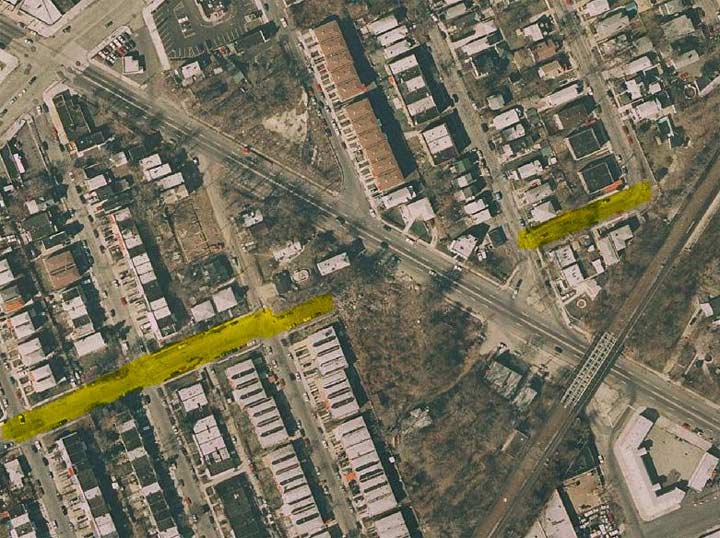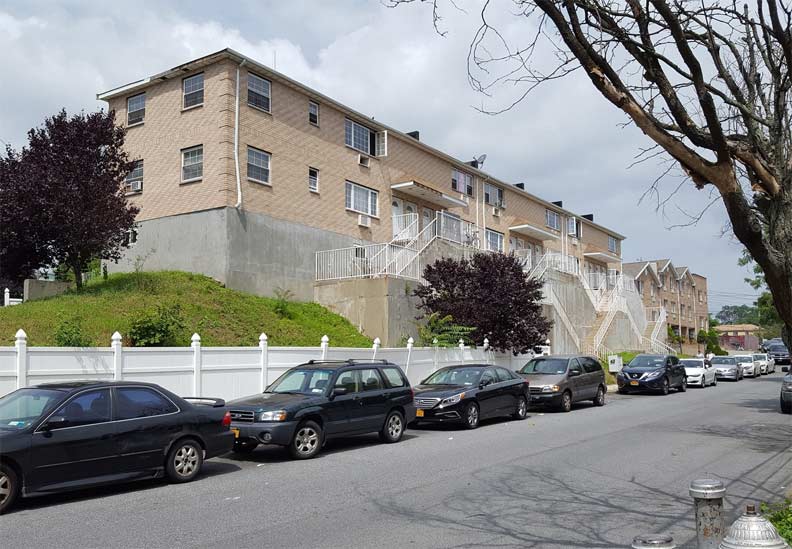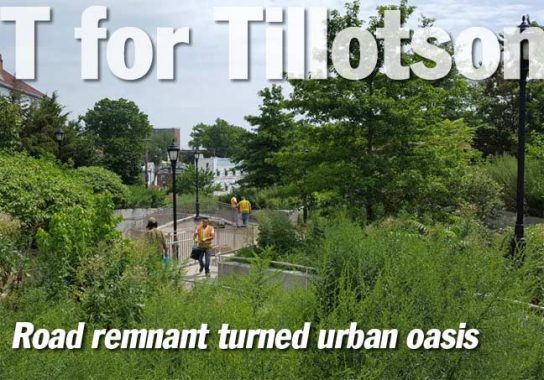By SERGEY KADINSKY
Forgotten NY correspondent
When the Bronx was annexed by New York City, the street grid of Manhattan was extended north and found itself facing topographical obstacles. In many examples, step streets maintained the grid’s appearance on the map. Most of them are in the western Bronx, where the hills are steeper. In the eastern half of the borough, there are fewer to be found.

Aerial view of Tillotson Avenue in 1996
In the Eastchester neighborhood, Tillotson Avenue runs straight in four segments: Eastchester Road to Wickham Avenue, for one block between Ely and Grace Avenues, Baychester Avenue to New England Thruway, and from across the Thruway to Hollers Avenue at Hutchinson River.

This section of the Bronx is relatively young, with many residential structures built in the last two decades of the twentieth century. Their design is quite bland, with ridiculously high staircases, but in this city folks are willing to pay top dollar even for these physically difficult homes.
On the block between Wickham Avenue and Bruner Avenue, Tillotson was a paper street for nearly a century as a steep slope in a largely undeveloped area delayed its construction.
By 2008, Bruner Avenue was extended for a short jog across East 222 nd Street with row houses on it. Never a fan of bowtie intersections, the city’s Department of Transportation tries to straighten them whenever possible.
Aerial view, 2010
As part of the project that tweaked the intersections of Wickham and Bruner with East 222 nd Street, the undeveloped block of Tillotson Street that touches on Bruner and East 222nd was given a unique pedestrian touch: a helix design where one leg is gently sloping for wheelchair use and the other has steps. In the middle of the helix is an open space with rocks and ledges, a sitting area encircled by plants and park-style lampposts.
From the top landing and bottom landing, the Tilotson steps have the appearance of a pocket park. The nearby Dyre Avenue subway line appears to cut through the grid on the map, but actually predates it, creating numerous dead-ends, alleys, and other grid-defies.
Sergey Kadinsky is the author of Hidden Waters of New York City: A History and Guide to 101 Forgotten Lakes, Ponds, Creeks, and Streams in the Five Boroughs (2016, Countryman Press)
Check out the ForgottenBook, take a look at the gift shop, and as always, “comment…as you see fit.”
8/1/17
